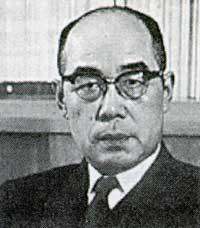Yukawa, Hideki
(1907-1981)
The Japanese physicist joined the city of Tokyo in 1907. He studied at the local university and in 1929 he graduated in physics. He graduated in 1938 and completed his studies at the University of Osaka. That same year he held the position of professor.

He then began to worry about the internal cohesion of the atom and addressed the study of elementary particles. Chadwich and Heisenberg's investigations were very advanced and based on them, but Yukawa was more. In his opinion, the essential transmission mechanisms of electromagnetic forces could also occur within the atom and considered the study of atomic force as the only key to solving the problem. According to knowledge until then, Yukawa strove in the next few years to find out what particles did the transmission of this force. He studied all the characteristics of these possible particles and postulated his theories in 1935. Yukawa's hypotheses had a great impact among scientists, but they were nothing more than convictions. But they did not believe themselves corrupt. In 1936 Anderson conducted cosmic ray studies and extended the particle hypothesis called meson. Yukawa announced that internuclear transport forces were particles called mesons. In 1947 they discovered the second inn and Yukawa's theories were completely confirmed. For his contributions to the theory of nuclear force, in 1949 he was awarded the Nobel Prize in Physics, being the first Japanese to obtain this honor.
In the coming years Yukawa made numerous trips. Among other things, Princenton at the Advanced Study Institute, invited by Oppenheimer, reported on his findings. He also worked at the Columbia and New York Universities to publicize the fundamentals of nuclear theory, but in 1953 he decided to return to Japan.
Until 1970 he was director of the Kyoto Institute of Physics and during those years he worked hard to encourage the work of the new scientists. In addition to his informative work, he continued as a professor at the University, forming a new generation of Japanese physicists.
Death was discovered in the same city in 1981.
Buletina
Bidali zure helbide elektronikoa eta jaso asteroko buletina zure sarrera-ontzian











